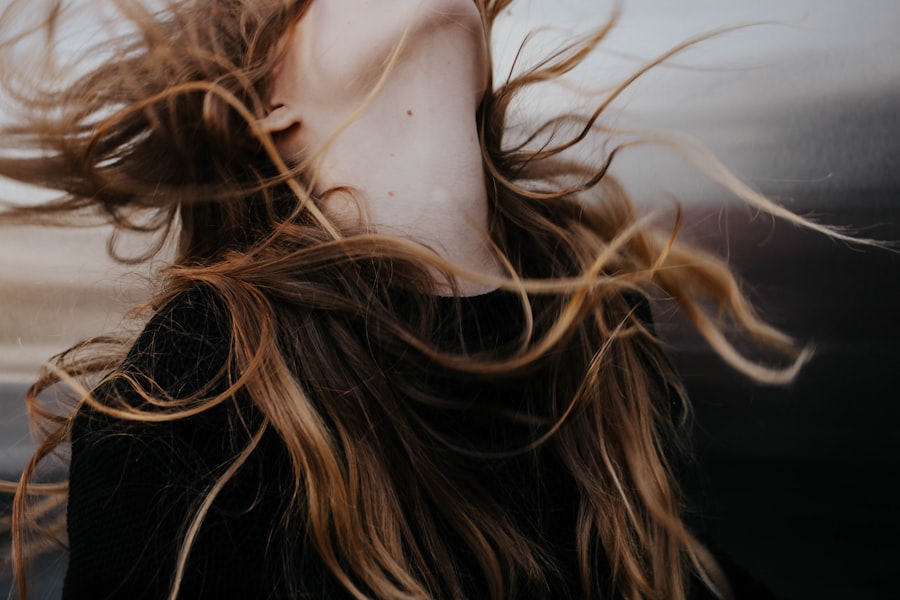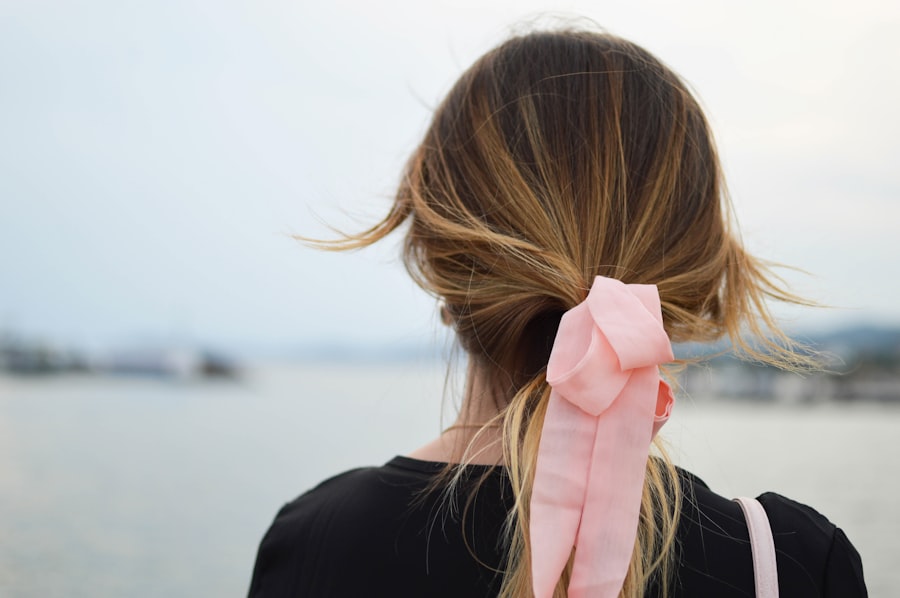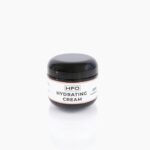When it comes to maintaining healthy hair, proper nutrition plays a pivotal role. You may not realize it, but the food you consume directly impacts the strength and vitality of your hair. A balanced diet rich in vitamins, minerals, and proteins is essential for promoting hair growth and preventing hair loss.
Incorporating foods high in omega-3 fatty acids, such as salmon, walnuts, and flaxseeds, can nourish your scalp and enhance the overall health of your hair. Additionally, vitamins A, C, D, and E, along with biotin and zinc, are crucial for maintaining the hair’s structure and promoting growth. You should also consider the importance of hydration.
Drinking plenty of water not only benefits your overall health but also keeps your hair hydrated from the inside out. Dehydration can lead to dry, brittle hair that is more prone to breakage. Including a variety of fruits and vegetables in your diet can provide essential antioxidants that combat oxidative stress, which can damage hair follicles.
By prioritizing proper nutrition, you set a solid foundation for achieving luscious locks that are both strong and vibrant.
Key Takeaways
- Proper nutrition is essential for healthy hair, so make sure to include a balanced diet with plenty of protein, vitamins, and minerals.
- Regular trimming helps to prevent split ends and breakage, keeping your hair looking and feeling healthy.
- Gentle hair care, including using a wide-tooth comb and avoiding harsh chemicals, can help maintain the natural oils in your hair and prevent damage.
- Avoiding heat damage from styling tools and excessive sun exposure can help maintain the strength and shine of your hair.
- Protect your hair from the elements by wearing a hat or using products with UV protection when spending time outdoors.
Regular Trimming
Regular trimming is another essential aspect of maintaining healthy hair. While it may seem counterintuitive to cut your hair when you’re trying to grow it out, trimming helps eliminate split ends and prevents further damage. You might find that scheduling a trim every six to eight weeks can significantly improve the overall appearance of your hair.
This practice not only keeps your ends looking fresh but also encourages healthier growth by removing any damaged sections that could hinder progress. Moreover, regular trims can help you maintain your desired hairstyle. If you have a specific cut or style in mind, keeping up with trims ensures that your hair remains in shape and looks polished.
You may also notice that your hair feels lighter and more manageable after a trim, making it easier to style and care for. Embracing this routine can lead to a noticeable difference in the health and appearance of your hair over time.
Gentle Hair Care

Gentle hair care is crucial for preserving the integrity of your strands. You may be tempted to wash your hair daily, but doing so can strip away natural oils that keep your hair moisturized and healthy. Instead, consider washing your hair two to three times a week with a sulfate-free shampoo that won’t cause excessive dryness.
When you do wash your hair, be sure to use lukewarm water rather than hot water, as hot water can lead to further dehydration. In addition to washing practices, how you handle your hair while it’s wet is equally important. Wet hair is more susceptible to breakage, so you should avoid vigorous towel-drying or rough handling.
Instead, gently pat your hair dry with a soft towel or an old t-shirt to minimize friction. Using a wide-tooth comb to detangle wet hair can also help prevent breakage.
Avoiding Heat Damage
| Heat Damage Prevention Techniques | Effectiveness |
|---|---|
| Using heat protectant products | High |
| Avoiding high heat settings on styling tools | Medium |
| Limiting heat exposure frequency | High |
| Using heatless styling methods | Low |
Heat styling tools can be a double-edged sword; while they allow you to achieve stunning hairstyles, they can also wreak havoc on your hair if not used properly. You should be mindful of how often you use heat tools like curling irons, straighteners, and blow dryers. Frequent exposure to high temperatures can lead to dryness, brittleness, and even permanent damage over time.
To protect your hair from heat damage, consider air-drying whenever possible or using heat tools on lower settings. When you do choose to use heat styling tools, applying a heat protectant spray beforehand is essential. This creates a barrier between your hair and the heat, helping to minimize damage.
Additionally, you might want to limit the use of heat styling tools to special occasions rather than daily routines. By being conscious of how you style your hair and taking preventive measures against heat damage, you can enjoy beautiful hairstyles without sacrificing the health of your locks.
Protecting Hair from the Elements
Your hair is constantly exposed to environmental factors that can affect its health and appearance. Sun exposure, wind, humidity, and pollution can all take a toll on your strands. To protect your hair from these elements, consider wearing hats or scarves when spending extended periods outdoors.
This simple step can shield your hair from harmful UV rays and prevent moisture loss caused by wind and sun exposure. In addition to physical barriers, using products designed to protect against environmental damage can be beneficial. Look for leave-in conditioners or serums that contain UV filters or antioxidants to help combat the effects of pollution and sun exposure.
You may also want to adjust your hair care routine based on the season; for instance, using heavier moisturizers during winter months can help combat dryness caused by cold air and indoor heating. By taking proactive measures to protect your hair from the elements, you can maintain its health and vibrancy year-round.
Using Hair Masks and Treatments

Incorporating hair masks and treatments into your routine can provide an extra boost of nourishment for your strands. These products are designed to penetrate deeply into the hair shaft, delivering essential nutrients that promote strength and shine. You might find that using a hydrating mask once a week can significantly improve the texture of your hair, making it softer and more manageable.
When selecting a hair mask or treatment, consider your specific hair type and concerns. For example, if you have dry or damaged hair, look for masks containing ingredients like argan oil or shea butter for added moisture. On the other hand, if you’re dealing with oily roots or product buildup, a clarifying treatment may be more suitable.
Experimenting with different masks can help you discover what works best for your unique needs. By regularly treating your hair with nourishing masks, you can enhance its overall health and appearance.
Minimizing Stress
Stress is often an overlooked factor when it comes to hair health. You may not realize that high levels of stress can lead to various issues such as hair thinning or even temporary hair loss.
Therefore, finding effective ways to manage stress is crucial for maintaining healthy locks. Consider incorporating relaxation techniques into your daily routine. Practices such as yoga, meditation, or even simple deep-breathing exercises can help reduce stress levels significantly.
Additionally, engaging in regular physical activity can boost endorphins and improve your mood while promoting overall well-being. By prioritizing stress management in your life, you not only benefit your mental health but also create a more favorable environment for healthy hair growth.
Avoiding Tight Hairstyles
While certain hairstyles may look chic and stylish, wearing tight hairstyles too frequently can lead to significant damage over time. Styles such as tight ponytails or braids can place excessive tension on the hair follicles, leading to traction alopecia—a condition characterized by gradual hair loss due to constant pulling. You should be mindful of how often you wear these styles and consider opting for looser alternatives whenever possible.
If you love wearing updos or braids, try alternating between different styles to give your hair a break from tension. Additionally, using soft scrunchies instead of traditional elastic bands can help minimize breakage while still allowing you to enjoy various hairstyles. By being conscious of how tight hairstyles affect your strands and making adjustments accordingly, you can maintain healthy hair while still expressing your personal style.
In conclusion, achieving and maintaining healthy hair requires a multifaceted approach that encompasses proper nutrition, gentle care practices, protection from heat and environmental elements, regular trims, stress management, and mindful styling choices. By incorporating these strategies into your routine, you set yourself up for success in nurturing beautiful locks that reflect vitality and strength. Remember that consistency is key; with time and dedication to these practices, you’ll likely see significant improvements in the health and appearance of your hair.
If you’re looking for more tips on maintaining healthy hair, be sure to check out this article on inlaserhairremoval.com. They offer a variety of resources and information on hair care, including sample pages and privacy policies. With their expertise, you can learn even more ways to keep your long locks looking their best.
FAQs
What are some tips for keeping long hair healthy?
Some tips for keeping long hair healthy include using a wide-tooth comb to detangle hair, avoiding heat styling tools, using a silk pillowcase to reduce friction, and regularly trimming split ends.
How often should I wash my long hair?
The frequency of washing long hair can vary depending on hair type, but it is generally recommended to wash hair 2-3 times a week to prevent stripping the hair of its natural oils.
What are some good hair care products for long hair?
Good hair care products for long hair include sulfate-free shampoos, moisturizing conditioners, leave-in treatments, and hair oils. It’s important to choose products that are suitable for your hair type and address any specific concerns such as frizz or damage.
What are some common causes of hair damage in long hair?
Common causes of hair damage in long hair include excessive heat styling, over-brushing, using harsh hair products, and not protecting hair from environmental factors such as sun exposure and pollution.
How can I prevent split ends in long hair?
To prevent split ends in long hair, it’s important to regularly trim the ends, avoid using heat styling tools, and use a deep conditioning treatment to keep the hair moisturized and healthy. Additionally, using a wide-tooth comb and being gentle when detangling can help prevent breakage and split ends.






